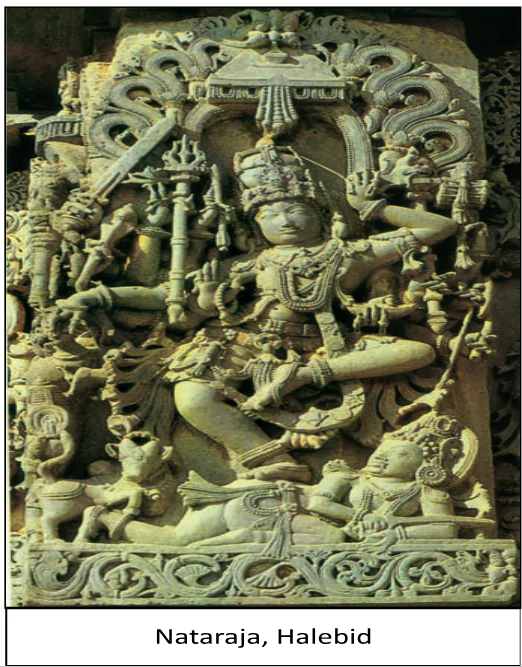Introduction
Hoysala architecture is considered intermediate between the Indo-Aryan style and the Dravidian style of temples. Temples were developed in the region of Karnataka under the Hoysala rulers between 1050-1300 AD. The prominent seats of this art were Belur, Halebidu, and Sringeri.
Characteristic features of Hoysala Temples

- Hoysalas: Succeeding the Cholas and Pandyas, became prominent patrons in South India.
- Region: In the southern Deccan, approximately a hundred temples have been discovered, with the Hoysaleshvara temple at Halebid, Karnataka, standing out among them.
- Importance: Constructed in 1150 CE by the Hoysala king using dark schist stone, it is one of the three most frequently discussed temples, alongside those at Belur and Somnathpuram.
- Commonality: Temples at Belur, Halebid, and Somnathpuram are characterized by stellate-plan, growing extremely complex with soapstone carvings, feature a unique vesara style, blending dravida and nagara elements.
- They are made of soapstones instead of sandstones, which enabled the intricate craftsmanship.
- Star-shaped temples with raised platforms (known as Jagati) and intricate sculptural carvings on the interior and exterior walls.
- Halebid Temple: Dedicated to Shiva as Nataraja, is a dual structure with a mandapa for music and dance, featuring intricate carvings of animals and deities.
- Other Temples:
- Chennakesava temple at Belur: It is dedicated to the Hindu god Vishnu.
- Chennakesava temple at Somanathapura: Vaishnava Hindu temple on the banks of River Kaveri, dedicated to Lord Krishna in three forms – Janardhana, Keshava and Venugopala.\
Enroll now for UPSC Online Course
Conclusion
- Hoysala temples, epitomizing architectural finesse and devotion, remain enduring symbols of South Indian heritage.
- Their intricate craftsmanship continues to captivate and inspire admiration among art enthusiasts and historians globally.
![]() April 18, 2024
April 18, 2024
![]() 1591
1591
![]() 0
0
